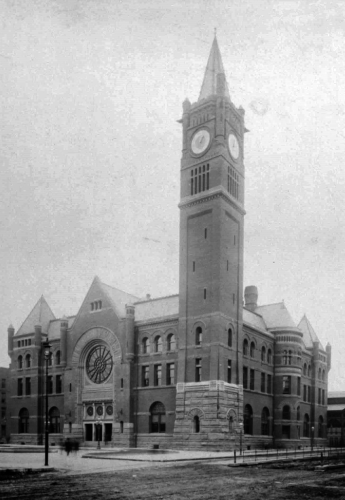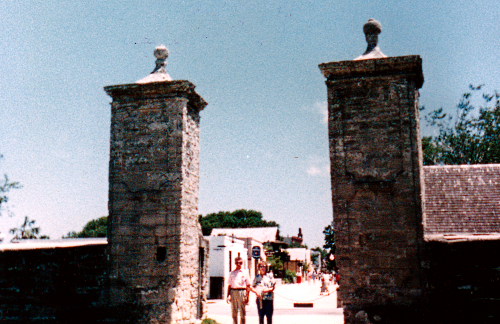I really should. I have to be up in a little bit, but I just finished Hollywood: Photos and Stories from Foreverland, by Keegan Allen and I have thoughts.
I bought this book from the discount table at a store. I’m pretty sure it was my own store, but maybe it was a different Walmart. I started it a while ago and really enjoyed it, but something interrupted my reading and I just found it again and decided to sit down and read it cover-to-cover.
It is a truly fast read — most of the book is photographs — but it made me think things. So I’m going to try to capture some of my thoughts before they disappear.
I have to admit that I’m not a big fan of pictures of people. Sometimes I wonder if that’s a sign of autism* or of facing some of the abuse I’ve faced in my life or if it’s just how I am and there is no real “why.” So, when the first few pages of landscape turned into pictures of people, I was kind of disappointed. But Allen clearly loves to photograph people and somehow it shines through in the beauty of the people he’s photographed in this book.
Not everyone in this book is conventionally beautiful. There are old people and scarred people and one guy with a forked tongue, and somehow, they’re all beautiful. I wonder what his secret is. Maybe it’s just love.
There are also poems and little vignettes written by Allen that are stories of the people who come to Hollywood. Some are running from something and some are running to something. Some achieve what they dream of and some do not.
And as I read them and empathized with them (yay for reading!) I also reflected a bit on my own past. Recently one of my friends posted a quote about how we become what we need to be to survive. And that is very true in my case, but it’s time to expand beyond that, I think.
My whole childhood, I wanted to write. One of my first pieces of fiction was a story I wrote when I was in . . . second grade? . . . about a friendly black widow spider. I’d just learned about venomous spiders and they frightened me, so I decided to take away the fear by making the spider a friend.
A few years later, I discovered the Nancy Drew books and decided that writing adventure/mystery books in that vein would be a good way to become a writer. I was horrifically embarrassed by my first attempt, in which my girl hero was visiting Egypt and got attacked by a lion. My uncle knew that I wanted to be a writer and he asked me what I was writing. I was afraid to tell him because, well, a lion? Really? He asked me if I knew where lions were from, and I said, Africa, and he asked me if I knew where Egypt was, and I said Africa. He told me that why would I think it was stupid to have someone attacked by an African animal in Africa. That made me feel a lot better. Rest in peace, Uncle Edward.
The next big turning point in my writing was in high school. My freshman year, my mom was not impressed by my high school’s newspaper**, so she encouraged me to apply my sophomore year. So I did, and by golly, the only people who got in were those who had had straight As in freshman English. I hadn’t; so, so much for that. I very briefly considered journalism after that, but gave up on that idea quickly because if I couldn’t get into my high school’s newspaper, what was the point?
My junior year, I sweated blood over a short story about a girl who worked in the local ice cream restaurant (based not-so-loosely on the Baskin Robbins down the street from my house). Several of my friends loved the story and I submitted it to my high school’s annual literature magazine and it didn’t get in. My friend Donna was incensed. She actually went to the teachers’ lounge to ask the faculty advisor why it hadn’t gotten in, and the advisor said that it was a great story, but it was too long, so they couldn’t publish it.
My senior year, I had a creative writing course, and several of the things I wrote for that class did get into the magazine, despite my not having submitted them. My teacher submitted them, which was amazing.
Then I had a hard time settling into college and by the time I got it back together, I was an A student in Education and my writing fell by the wayside for those years. I toyed with a novel about two teenagers with hyperactive and distracted ADD (I didn’t realize that was what I was writing, but yeah) who go on a fantasy adventure and find themselves becoming friends, but that never really went anywhere.
I got my writing back together in the mid-9os when I discovered fanfiction. I wrote a lot a lot of stories during that era. Then Thomas and I split up and . . . so much for that.
That brings us to the current era, when I’m having trouble writing fiction. When I found myself needing money, I made a few hundred dollars writing for content farms. I wrote some history, some travel, some . . . gardening? And really discovered that non-fiction has some appeal for me. If you’d’ve told 13-year-old me that I’d enjoy writing history and travel so much, I’m not sure I’d’ve believed it.
I’m now considering some fiction. It’s like, oh, maybe a Rubik’s cube or something. I take my fiction out and fiddle with it a bit and then put it back. I then return to my history and travel writing and book reviews.
The two fiction things I have at the forefront of my mind right now are a fantasy novel that started out as historical fiction about a world where Chinese explorers discovered North America before the Europeans do and a steampunk story about a sibling pair carrying classified information cross-country from their dad to their mom. I’ll continue playing with these and who knows? Maybe someday I’ll be a novelist.
I might even actually write that ADD-kids book I wrote two chapters of back in the 1980s.
=======
*I’ve never been diagnosed and I’ve done online screenings that say that I probably am not diagnosable, but I do have some traits that people on the spectrum have. If I’m on the spectrum, I’m on what one of my friends calls the not-inconvenient end of it.
**Now, I’m paraphrasing here, since this was, oh, dear God, 41 years ago, but she said something about how the newspaper read like it had been written in a foreign language and translated badly into English.



